When I work with construction companies, one of the biggest concerns is where should I spend my limited marketing budget to actually see results? Too many contractors are putting money into activities that look busy but don’t actually move the needle. The truth is, you don’t need a massive ad budget to see traction. You just need to focus on what pays off now, build from there, and cut out the waste.
Here are some lessons I’ve learned working directly with small to mid-sized construction firms who needed profitable marketing investments right out of the gate.
The Most Common Money-Waster We Cut in Month One
The first thing we almost always cut is organic social media. Not because it’s worthless, but because it’s not where you should be spending money if you need leads right now.
A post by Neil Patel recently referenced that while 21.5% of customers first discover a brand on social media, only 3% of revenue comes from organic social. That means it’s a top-of-funnel tactic — it builds awareness, but doesn’t bring in immediate leads.
If your pipeline is empty, spending thousands to post pretty pictures isn’t going to save your business. Bottom-of-funnel activities like paid search, SEO for service keywords, and conversion-optimized landing pages should take priority.
When Data Forces You to Pivot
A lot of construction marketing strategies look good on paper until you actually see the data.
For example, with one high-end design-build remodeler, we initially structured their Google Ads campaigns by room type — kitchens, bathrooms, basements. It’s a common way to segment, but it didn’t work. The leads that came in were too small, or the search terms made it impossible to tell intent.
We pivoted away from room-specific ads and instead built campaigns around intent-driven keywords like “design build contractor” and “architect and remodel company.” The difference was night and day. Higher-quality leads, bigger jobs, and prospects that matched the client’s ideal customer profile. The leads were much more expensive, but that was justified due to the increase in lead quality.
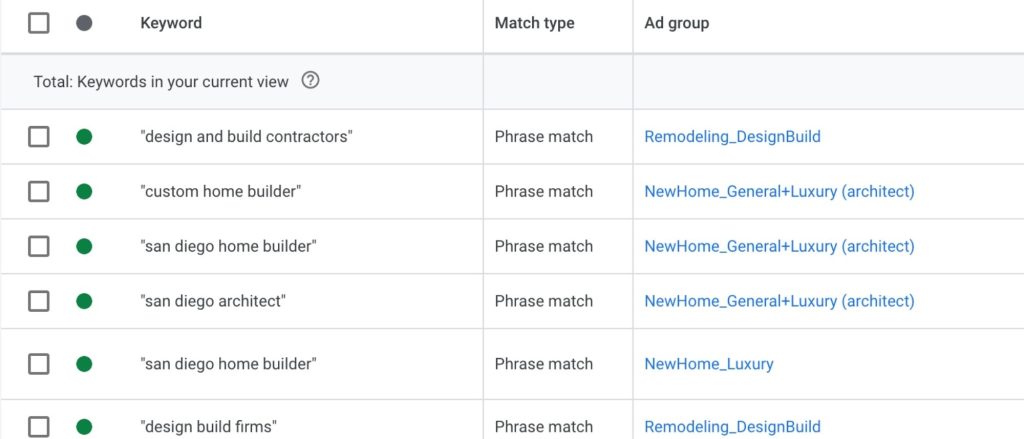
Our Monthly Reporting Framework
At Nover Marketing, our monthly reporting meetings with clients always follow the same agenda.
- Recently completed work: so clients see what was actually executed before reviewing the numbers.
- Leads: how many came in, where they came from, and whether they were qualified.
- Channel-by-channel breakdown: organic rankings and AI/LLM placements, PPC ad performance, social, email campaigns, etc.
- What’s next: based on the data, where do we double down, where do we pivot, and what gets cut.
This approach ties the work we’re doing directly to revenue impact — not vanity metrics.
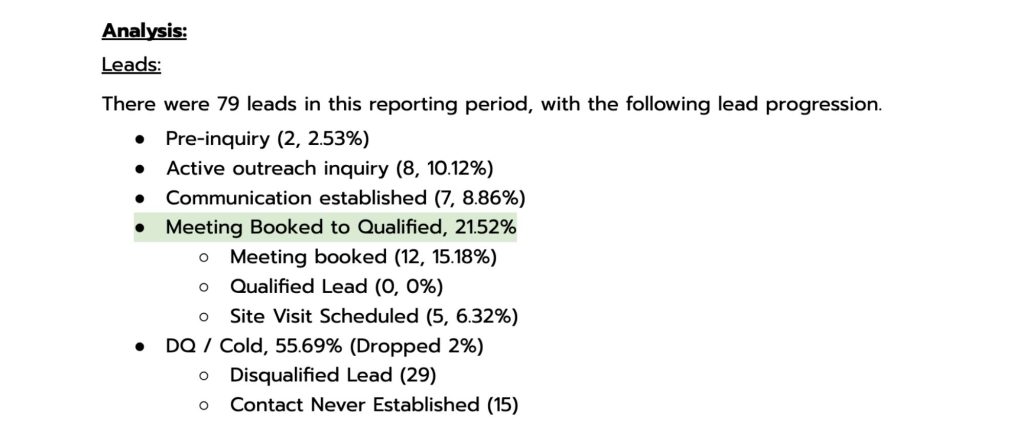
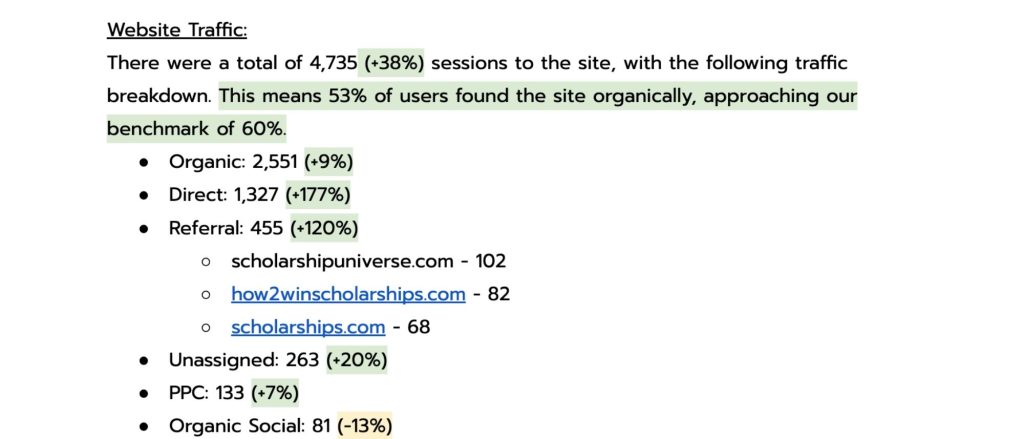
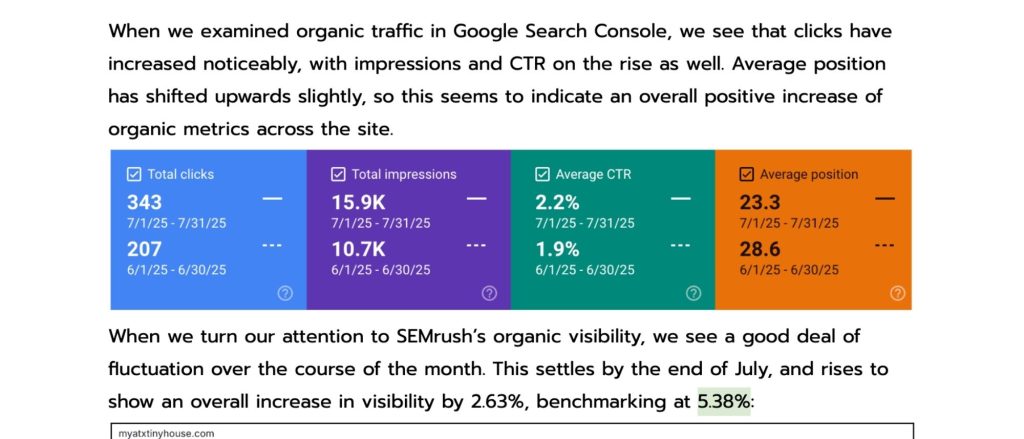
How to Vet Agencies Who Pitch Performance Max
Performance Max campaigns are heavily pushed by agencies and even by Google, but construction companies need to tread carefully.
The two key questions I tell clients to ask:
- What are you counting as a conversion? If it’s a page view or a button click, run. For construction, conversions should only be form fills or phone calls.
- Do you clean your conversion data? If you’re counting spam or sales outreach as “conversions,” the numbers will always look good — but your pipeline will still be empty.
Unless an agency can answer both of these with confidence, they’re probably reporting fluff instead of results.
My Contrarian Spending Rule
Most agencies will tell you $1,000/month on ads is a waste. I’ll tell you the opposite.
You can get results with a $1,000/month PPC budget. It won’t deliver 50 leads a month, but it can get you enough traction to make a difference. For some construction businesses, that one extra project pays for months of advertising. And if it allows you to scale to $2,000 or $3,000/month over time, that’s how real growth happens.
The rule I live by: don’t let perfect be the enemy of profitable. Start where you are, invest wisely, and scale as results come in.
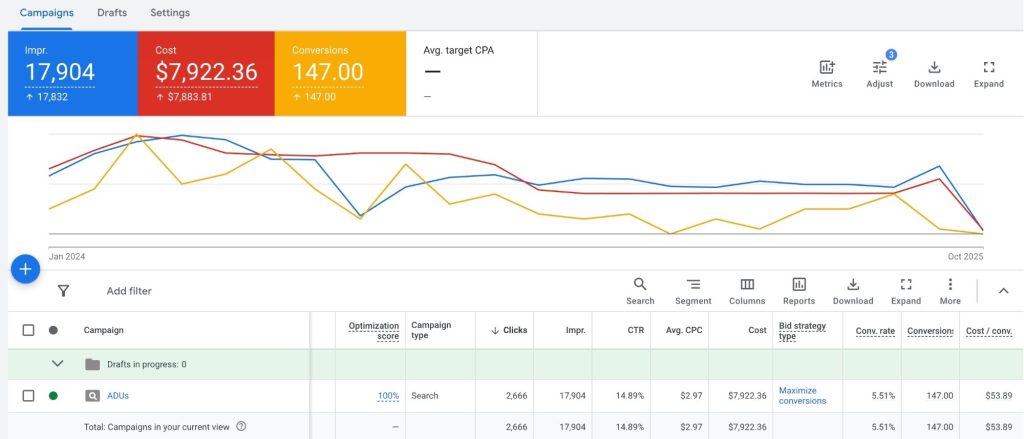
Final Takeaway
Marketing spend for construction companies isn’t about spending more, it’s about spending smarter. Cut the fluff, track what actually matters, and be willing to pivot when the data tells you to. Even a modest budget can work if it’s focused on the bottom of the funnel and tied directly to leads and revenue.
If you want a second opinion on your current marketing budget, reach out for a free consultation. We’ll tell you what’s working, what’s wasting money, and where to shift spend to hit your growth goals.